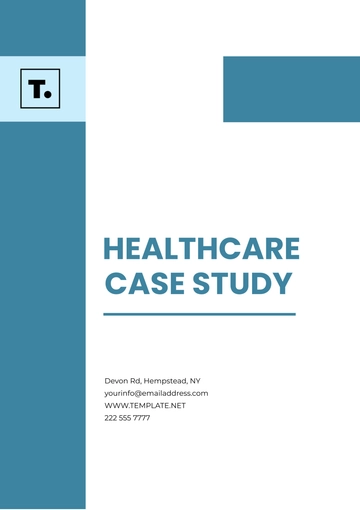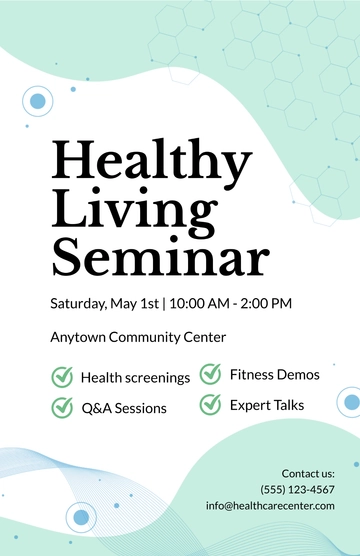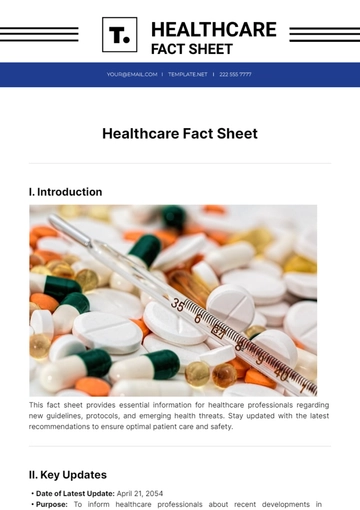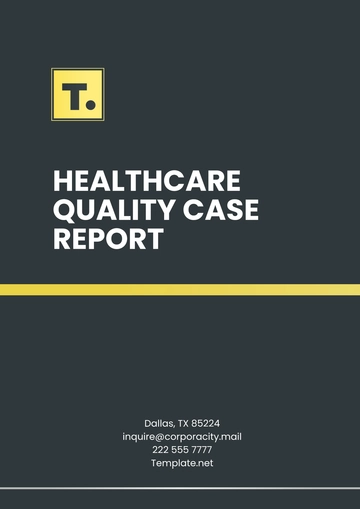Free Nursing Home Marketing Guide

I. Executive Summary
Welcome to the [Your Company Name] Marketing Guide, a comprehensive roadmap designed to navigate the complexities of marketing in the elder care industry. Our goal is to enhance [Your Company Name]'s visibility, demonstrate the unmatched quality of our care, and ultimately increase our resident occupancy rates. This document outlines our strategic approach to achieving these objectives, leveraging our unique selling propositions (USPs) to stand out in a competitive landscape.
II. Market Analysis
A. Industry Overview
The elder care industry is experiencing significant growth, driven by an aging population and increased demand for specialized nursing care. Key trends include a shift towards personalized care plans, the integration of technology in daily care, and an emphasis on community-based living.
B. Target Market
Audience | Characteristics |
|---|---|
Seniors | Individuals aged 65+, seeking a blend of independence and care. |
Families | Adult children of potential residents, prioritize safety and quality of life for their loved ones. |
Healthcare Providers | Referral sources such as doctors, nurses, and social workers looking for reputable care options. |
C. Competitive Analysis
An in-depth analysis of our competitors in the industry reveals that while a considerable number of facilities offer a standard level of care, only a handful truly provide the holistic, resident-first approach that characterizes the operating philosophy of [Your Company Name]. This approach focuses on addressing not just the physical healthcare needs of the residents, but also their emotional and social needs, promoting the overall well-being of each individual resident. Our competitors, unfortunately, often fall short in these areas. Their major weaknesses typically lie in their failure to provide a personalized level of care that truly understands and addresses the unique needs and preferences of each resident and their lack of modern amenities designed to enhance the residents' quality of life. In contrast, these are the areas where [Your Company Name] truly stands out and excels, distinguishing ourselves from the competition and providing superior value to our residents.
III. Marketing Objectives
Our marketing objectives are strategically designed to address the core goals of increasing occupancy, enhancing brand awareness, and fostering engagement within our community and online platforms. Beyond these, we aim to establish [Your Company Name] as a thought leader in elder care. Each objective is SMART: Specific, Measurable, Achievable, Relevant, and Time-bound.
Increase occupancy rates by 20% within 12 months by implementing targeted marketing campaigns and improving our referral program to attract new residents.
Boost brand awareness within our local community by 30% over the next year through a mix of traditional marketing, community events, and public relations efforts to ensure [Your Company Name] is top of mind for elder care.
Enhance online engagement by 25% within six months by optimizing our digital content, improving our social media strategy, and offering valuable, interactive resources that engage our target audience.
Establish [Your Company Name] as a thought leader in elder care by contributing articles, studies, and expert advice on elder care topics, participating in industry panels, and hosting educational events for both healthcare professionals and the community.
IV. Unique Selling Propositions (USPs)
[Your Company Name] distinguishes itself in the competitive landscape of elder care facilities through our dedicated focus on individualized care, innovative health and wellness programs, and our commitment to creating a vibrant community for our residents.
Personalized Care Plans: Every resident receives a care plan tailored to their specific needs, preferences, and goals. This bespoke approach ensures optimal health, happiness, and satisfaction among our residents.
State-of-the-Art Facilities: Our facilities are designed with the comfort and well-being of our residents in mind. From spacious living quarters to communal areas that encourage social interaction, every aspect of [Your Company Name] is built to feel like home.
Comprehensive Wellness Program: We offer a holistic approach to health that includes physical, mental, and social activities. Our programs are designed to enhance the quality of life for our residents, incorporating everything from physical therapy and fitness classes to mental health support and social gatherings.
Community Engagement: [Your Company Name] is deeply integrated into the local community, offering numerous outreach and volunteer opportunities that allow our residents to maintain a sense of purpose and connection to the world around them.
V. Marketing Strategies and Tactics
A. Branding
In order to effectively communicate our commitment to providing quality care and nurturing a strong sense of community, we must develop a cohesive brand identity that accurately reflects these values. This process will involve a number of tasks, the first of which includes refreshing our current company logo to better encapsulate our missions and goals. Additionally, we should consider adopting a new, warm, and inviting color scheme as part of our overall branding - this will not only be visually appealing but also help to express the sense of care and community we wish our brand to embody. Lastly, it will be crucial to ensure that all of our marketing materials are consistent in how they convey our core values. From advertisements to product packaging, every piece of promotional content must illustrate our dedication to quality care and community building, thereby further solidifying our cohesive brand identity.
B. Digital Marketing
Website: Optimize our website for search engines, making it easy for families to find us and learn about our services.
Content Marketing: Establish a blog to share helpful articles on elder care, resident stories, and updates from our facility.
Social Media: Engage with our community on platforms like Facebook and Instagram, sharing daily life at our facility and providing valuable resources.
Email Marketing: Send monthly newsletters to keep our community informed and engaged.
C. Traditional Marketing
Design and distribute brochures and flyers in local hospitals, clinics, and community centers.
Host open houses and community events to showcase our facilities and services.
Establish partnerships with local businesses to increase our visibility in the community.
D. Public Relations
For the local newspapers and various online publications, drafting and releasing essential press articles is a key task to inform about any new services or up-and-coming events. Simultaneously, it is crucial to develop an efficient crisis communication strategy to safeguard and maintain the integrity of our company's reputation during times of adversity and challenging circumstances.
E. Referral Programs
Begin the implementation of a referral program. This program should be designed in such a way that both healthcare providers and families are included in receiving benefits. These benefits serve as incentives that encourage more participation. The rewards mentioned are given out for each successful referral they make. The referring party receives a reward when their referral translates into the successful placement of a new resident in the healthcare facility.
VI. Sales Strategy
Our sales strategy is centered around building trust and demonstrating the tangible benefits of choosing [Your Company Name]. This involves a multi-step process designed to engage potential residents and their families from the first point of contact to the decision-making phase.
Initial Inquiry Response: Respond to all inquiries within 24 hours with personalized communication, acknowledging their needs and offering initial information about our facility.
Customized Tours: Provide personalized tours of our facilities, highlighting features and services that align with the interests and needs of the prospective resident.
Follow-Up: After the tour, follow up with a personalized message thanking them for their visit, addressing any additional questions, and providing further information tailored to their specific concerns or interests.
Ongoing Education: Keep potential residents and their families informed with regular updates about life at [Your Company Name], including stories from current residents, upcoming events, and new services or amenities.
Closing Process: Offer guidance through the decision-making process, including transparent discussions about costs, financial assistance options, and the transition to life at [Your Company Name].
VII. Budget and Financing
Marketing Area | Estimated Budget |
|---|---|
Digital Marketing | $20,000 |
Traditional Marketing | $15,000 |
Events and Open Houses | $10,000 |
Public Relations | $5,000 |
Referral Programs | $10,000 |
Total | $60,000 |
The expected ROI for these activities is a 20% increase in occupancy within 12 months, translating to increased revenue that significantly exceeds the marketing investment.
VIII. Implementation Timeline
Q1 | Q2 | Q3 | Q4 |
|---|---|---|---|
Launch new website | Increase social media activity | Begin referral program | Evaluate annual performance |
Develop brand materials | Host first open house | Execute email marketing campaign | Adjust strategies as needed |
Initiate SEO and content marketing | Continue PR efforts | Plan and conduct community events |
IX. Monitoring and Evaluation
To ensure the effectiveness of our marketing strategies, [Your Company Name] will implement a robust monitoring and evaluation framework. This framework will help us understand the impact of our marketing efforts, identify areas for improvement, and make informed decisions moving forward.
Performance Tracking: Utilize tools such as Google Analytics for our digital platforms, CRM software for sales activities, and social media analytics to monitor engagement and reach. Metrics to watch include website traffic, conversion rates, social media engagement, email open rates, and event attendance.
Quarterly Reviews: Conduct comprehensive reviews every quarter to assess the performance of all marketing activities. This includes analyzing KPIs, comparing them against our objectives, and adjusting our strategies as needed.
Feedback Loops: Collect and analyze feedback from residents, their families, and referral partners to gain insights into their experiences and perceptions of [Your Company Name]. This feedback will be invaluable in refining our marketing messages and strategies.
ROI Analysis: Evaluate the return on investment for each marketing channel and activity. This analysis will guide budget allocation decisions, ensuring we maximize the impact of our marketing spend.
- 100% Customizable, free editor
- Access 1 Million+ Templates, photo’s & graphics
- Download or share as a template
- Click and replace photos, graphics, text, backgrounds
- Resize, crop, AI write & more
- Access advanced editor
Revolutionize your outreach with Template.net's Nursing Home Marketing Guide Template. Crafted for comprehensive marketing strategies, this template is fully customizable and editable via our Ai Editor Tool. Navigate the complexities of healthcare marketing, enhancing your visibility and attracting more residents. An indispensable resource for nursing homes seeking growth and engagement, exclusively available at Template.net.





























